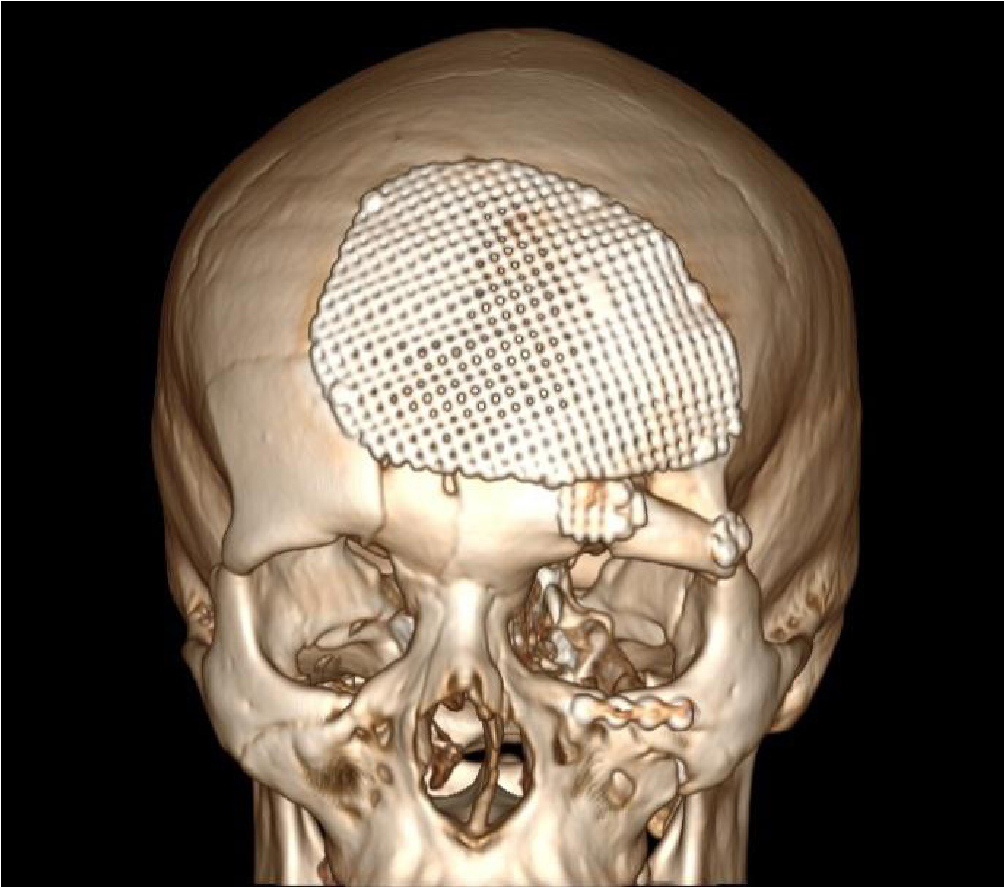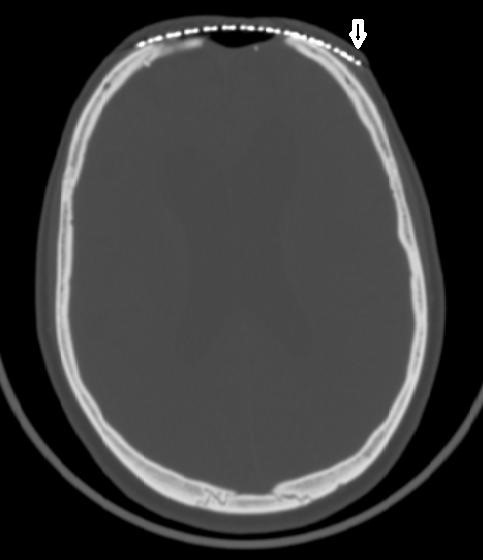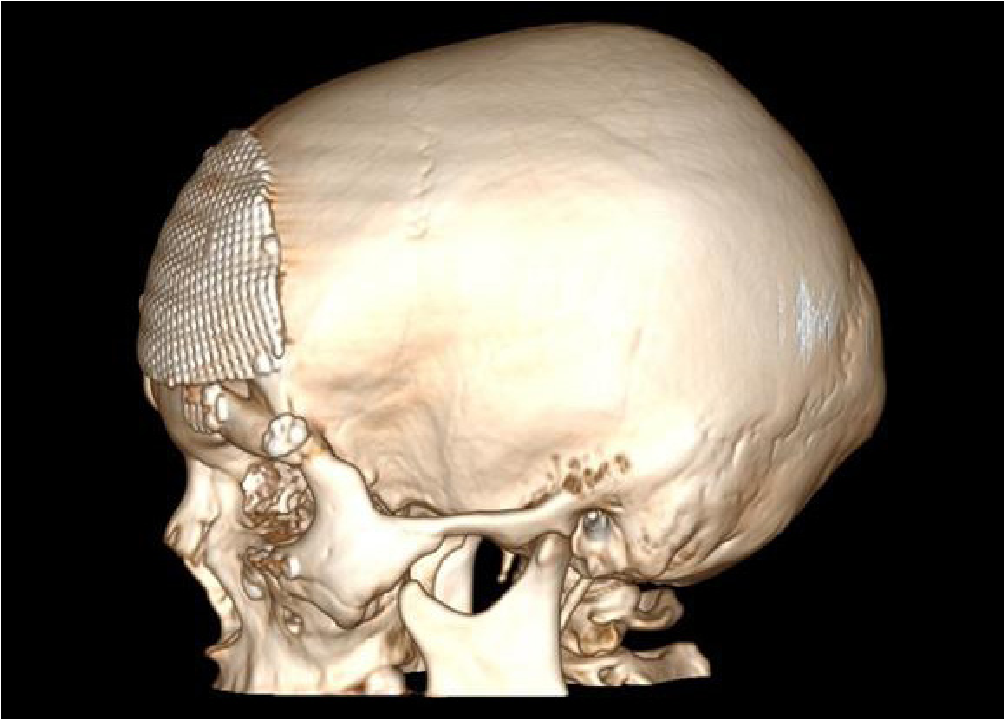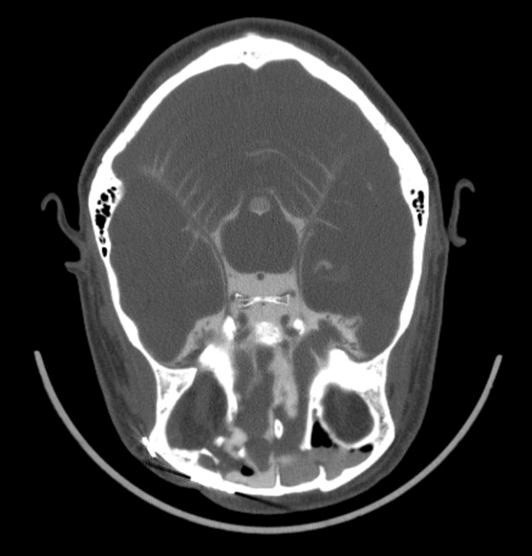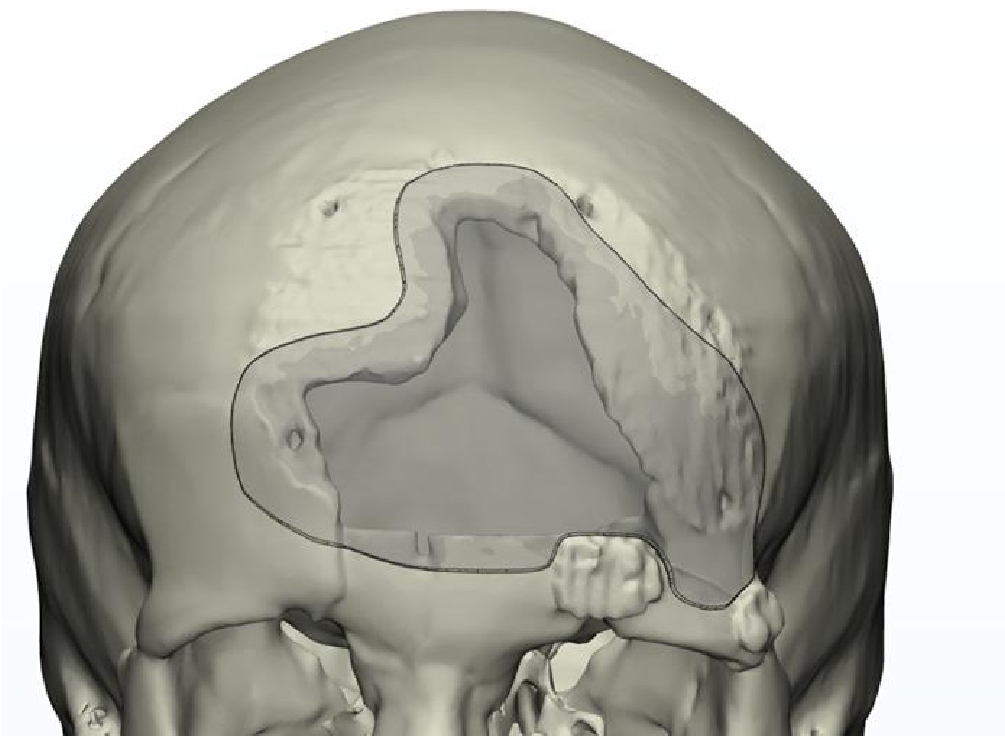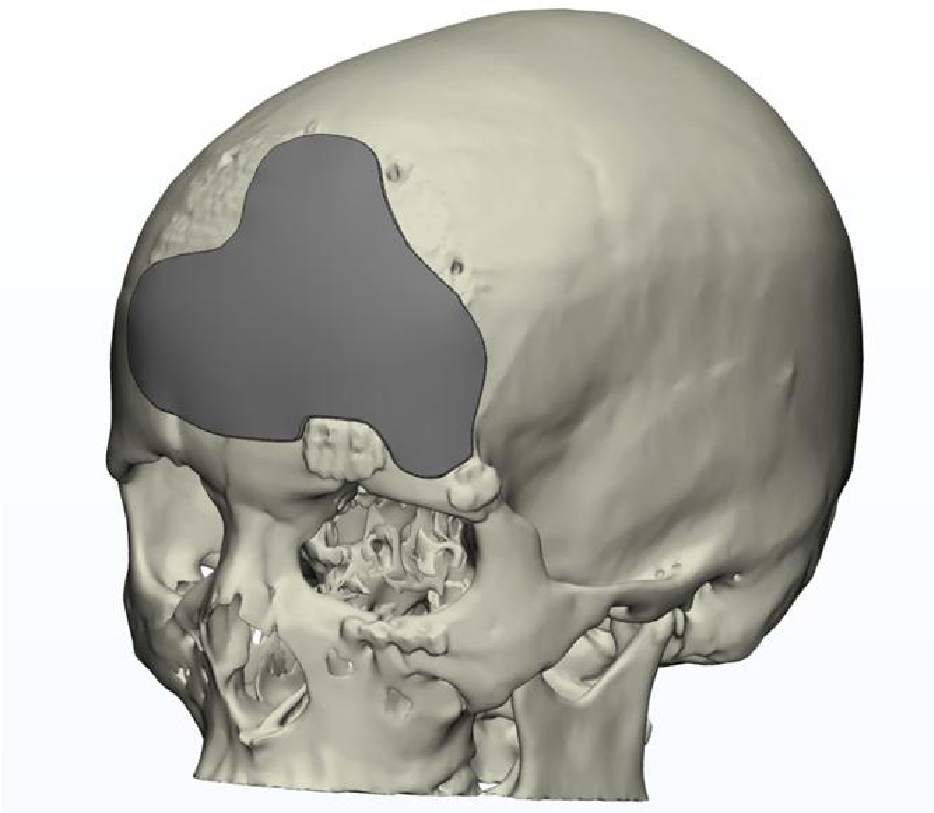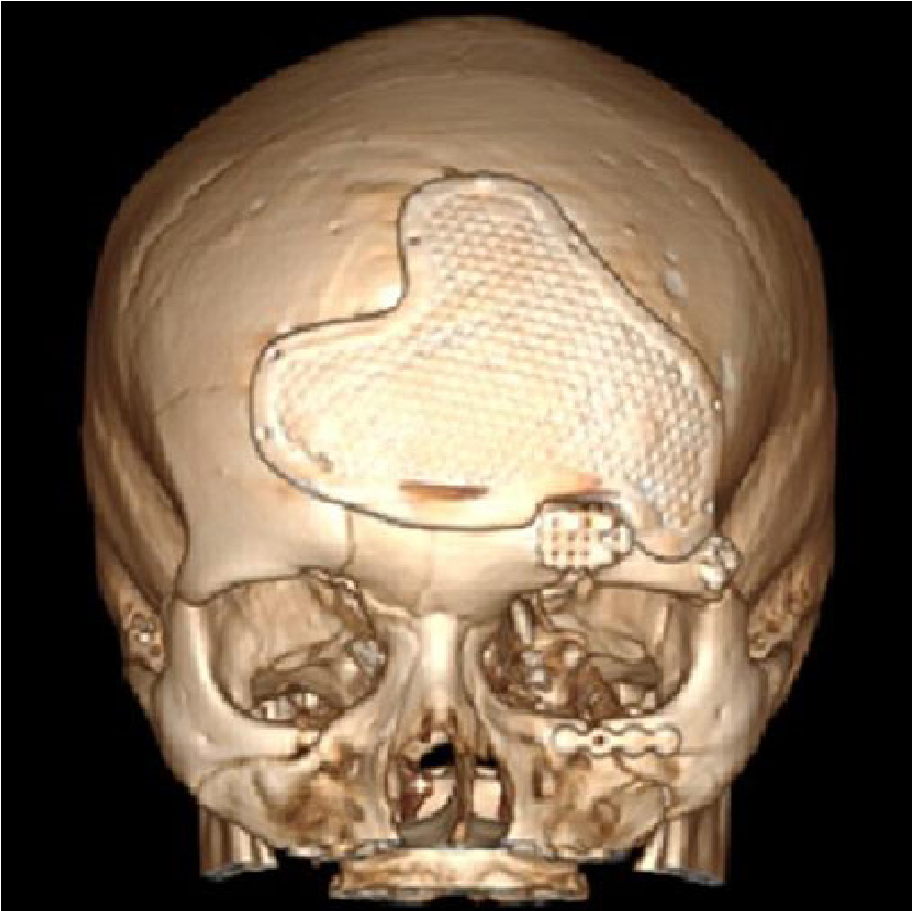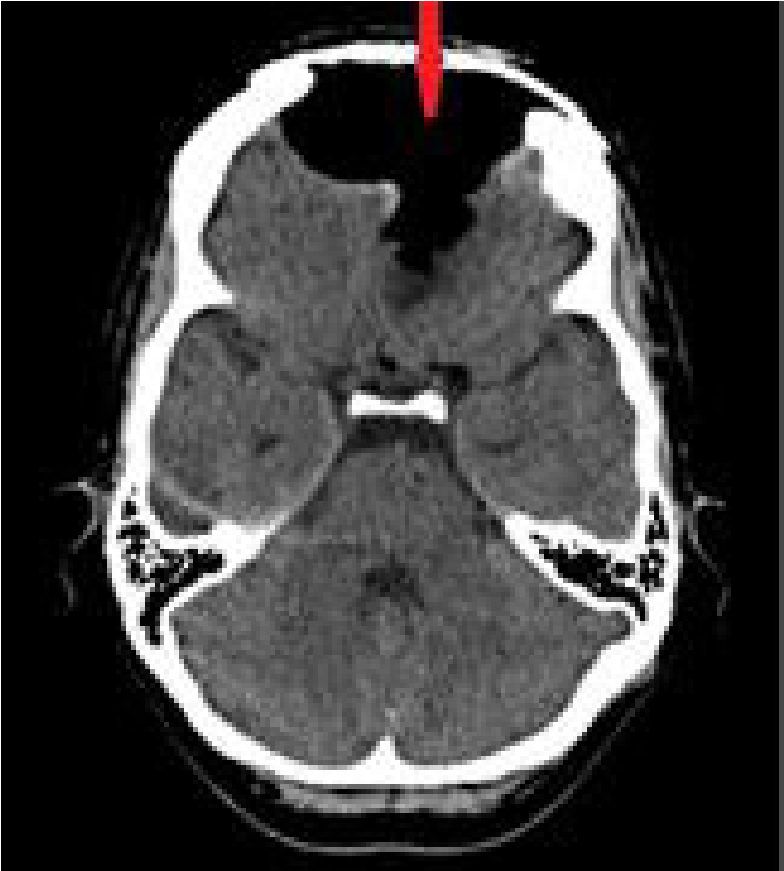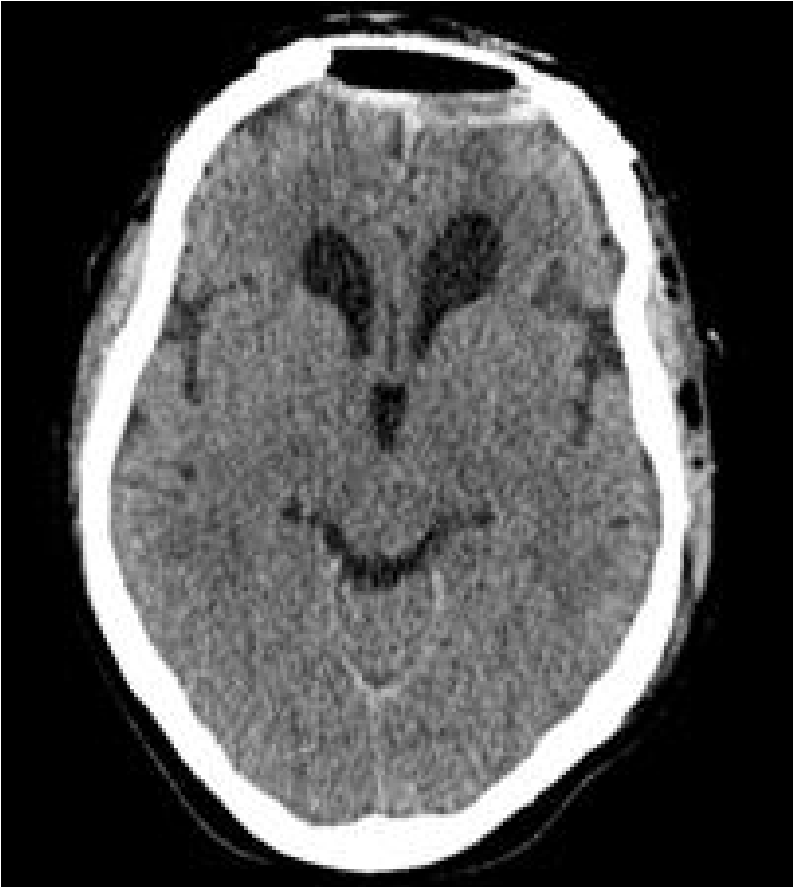
This article is an open access article distributed under the terms and conditions of the Creative Commons Attribution license (CC BY).
CLINICAL CASE
Simultaneous repair of the skull base and the frontal lobe defect using CAD-CAM technology
Federal Siberian Research and Clinical Center of FMBA, Krasnoyarsk, Russia
Correspondence should be addressed: Evgeniya A. Blinova
Vorovskogo, 68, korp. 1, Chelyabinsk, 454141, Russia; ur.mrcru@avonilb
Funding: the work was part of the State Assignment on the Cranial bone defect repair with shape memory materials.
Acknowledgments: the authors thank Urasovsky IB, Director of Logeeks Medical Systems, and Panchencko AA, Director of Engineering, for their help in creating the customized implant.
Compliance with ethical standards: the patient gave her informed consent to participate in the study
